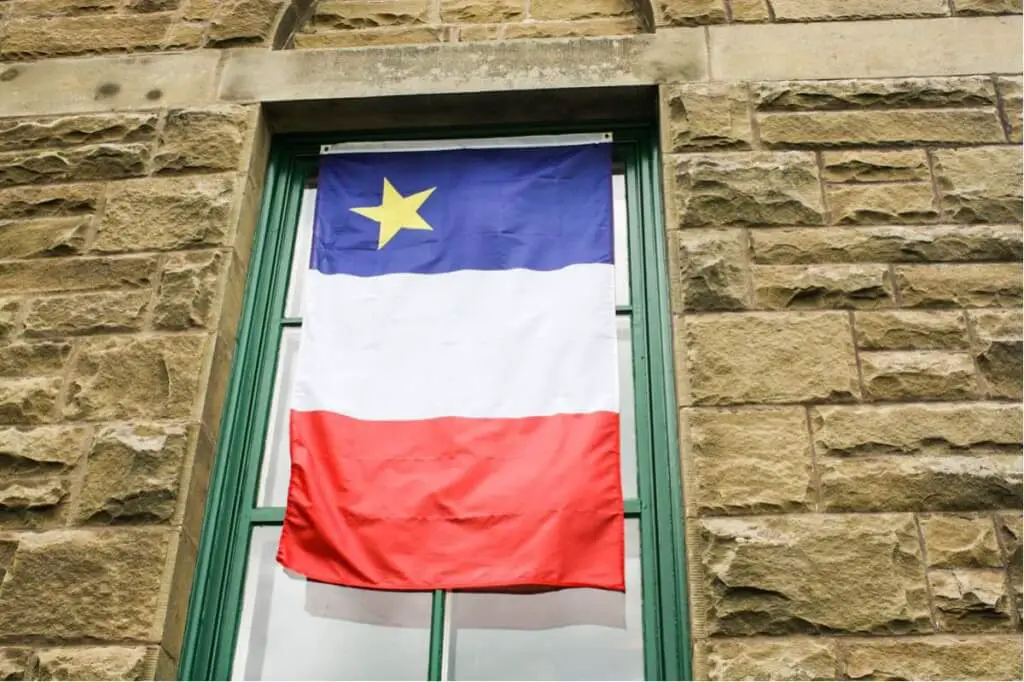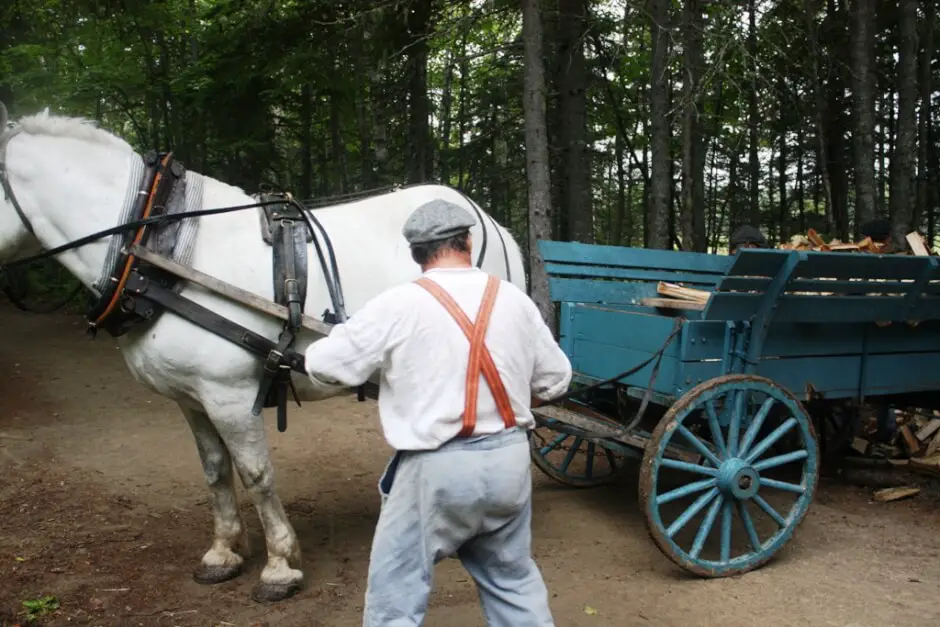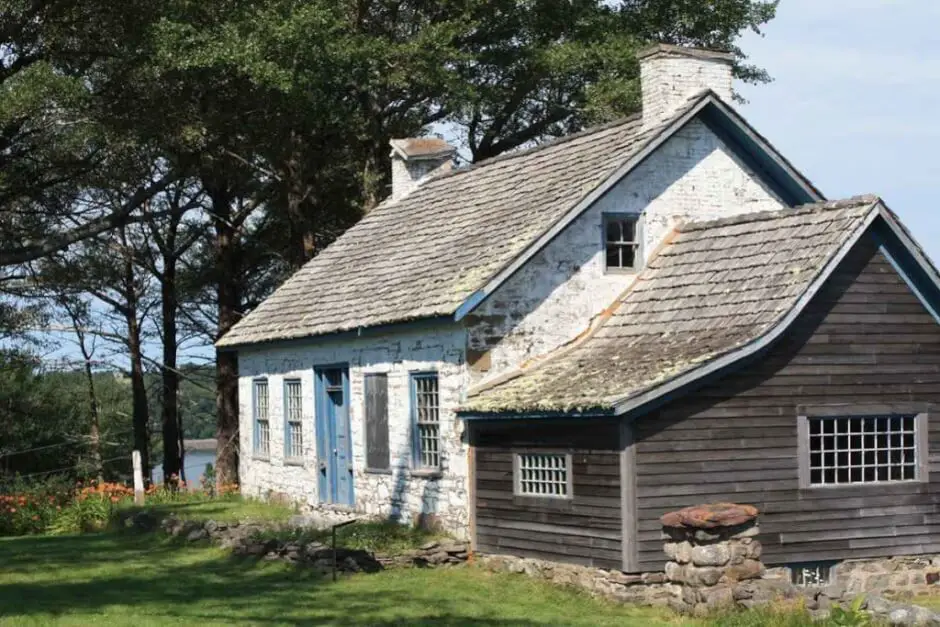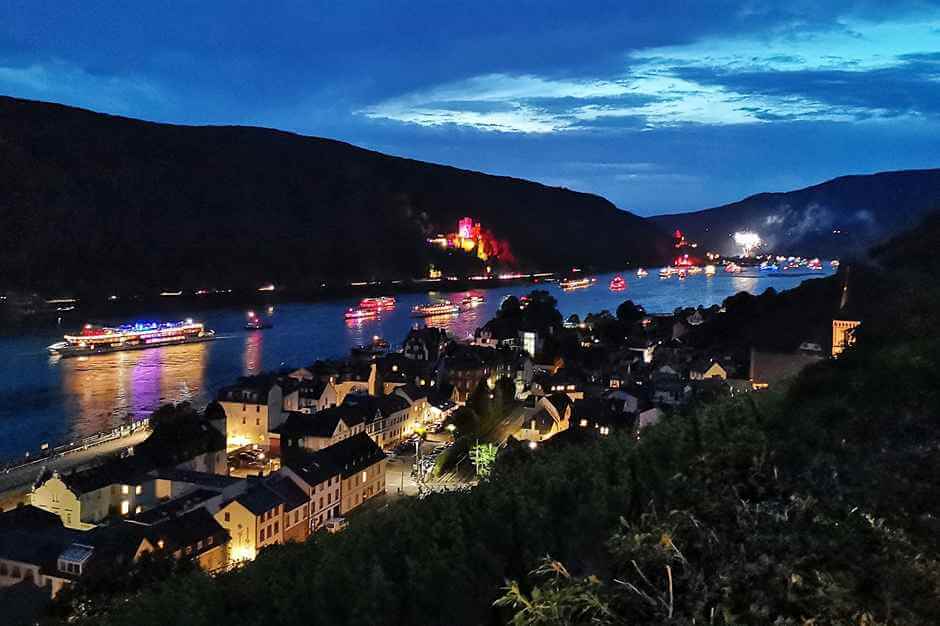On the trail of the Acadians in New Brunswick
Do you know that? Are you traveling to a country and learning interesting aspects on the way that you would like to know more about? That's what happened to our previous trips through Atlantic Canada. One of the topics we have been dealing with ever since is the history of Acadians who were expelled by the English in 1755 during the "Great Deportation", What happened to them, what destinies did they experience, and above all, are they still in the provinces of Nova Scotia, New Brunswick and Prince Edward Island? These were questions that have not left us alone since then. Reason enough to dedicate a part of this year's journey through New Brunswick to this topic. We found a surprising number of places where both the Acadian heritage and the Acadian culture are still very much alive and present. We present these at this point:

Fort Beauséjour
The fort is located just five minutes by car from the Nova Scotia-New Brunswick border near Highway 2 (TransCanada Highway). A trip there is not only worthwhile because of the historical background, but also because of the beautiful view of the Bay of Fundy, which one has from the hill on which the fort stands. Our companion Darrell explains that the fort was built here in 1751. The Chignecto isthmus, the narrow land bridge that connects Nova Scotia and New Brunswick, was an important link between the Bay of Fundy and the Atlantic coast, which was already used by the Indians and later the French colonists. "The British took it a few years later - in June 1755 - after only two weeks of siege. The French motherland did not send any support, and so the small garrison could not be held. ”From the cannon positions in front of the fort we can look over the small border river with the unspeakable name Missaquash, which separates the two provinces. "The English came over these hills," says Darrell, pointing south.
More information about Fort Beauséjour can be found here.
We pay a visit to the visitor center, if we want to visit yet another museum, which deals with the history of the Akadier, and only a few kilometers away:
Monument Lefebvre in Memramcook
Only thirty kilometers further north is Memramcook, also known as the "cradle of the Acadians", since the first of them arrived in Canada in 1700. The inhabitants of the small town were to be driven out of their homeland in 1755, like other Acadian communities. However, the residents of Memramcook hid in the woods on the advice of their missionary. With the support of the local Micmac Indians, they managed to drive the English out of here, albeit with heavy losses, and 200 families escaped the deportation.

So, the site looks back on an uninterrupted Acadian history and became the birthplace of the Acadian Renaissance, which 1864 began with the opening of College St. Joseph, one of the founding colleges of the University of Moncton. It was the first time that French-language instruction was offered at a higher education institution in the Atlantic Canada. 1881 hosted the first Acadian National Assembly. 1966 merged the college with the University of Moncton. Since then, the building has been a museum in which both the history of deportation and - and this is the interesting thing about it - the development of the modern Acadian self-image and self-confidence since the end of the 19. Century is shown.

We learn of Camille Lefebvre's college establishment, but also of Louis J. Robichaud, the first Acadian Prime Minister of New Brunswick, who, together with his English successor Richard Bennett Hatfield, strongly supported the integration of the Acadians. New Brunswick saw it as a top-down Akadier revolution, as the Equal Opportunities Act, which put Robichaud into force, brought education, health, welfare and justice under state control, giving the Acadians the same access to these services as they did English-speaking population New Brunswick had.
Monument Lefebvre
480, rue Centrale,
Memramcook,
N.-B.E4K 3S6
Le Pays de la Sagouine in Bouctouche
The next day we visited Le Pays de la Sagouine in Bouctouche, a unique academic experience. And I mean that literally. It is difficult to describe what this facility is - it is not a museum, but rather an experience that is offered on the premises. An experience that brings the Acadian way of life and the soul of this ethnic group as close as possible to the visitor. In the visitor center we are welcomed by "Dorine", one of the actresses who represent a certain person. Le Pays de la Sagouine is based on a play by Antonine Maillet that tells the story of Laundress Sagouine. This play is performed on the premises.

But Le Pays de la Sagouine is much more: on an island in the bay of Bouctouche, various houses have been built, depicting the life of the ancient Acadians. Visitors can attend Kitchen Parties, learn how to tap the Akadic dances with their spoons, listen to Acadian music groups, and hear tales of the sea in the Chiac, the dialect of the Acadians from the English-French part of New Brunswick which often requires more English than French.

At the Ordre du Bon Temps Restaurant, we make our first acquaintance with the simple dishes of the Acadian cuisine. Potatoes, salted cod and maple syrup play a major role in this. Maybe not for everyone, but try it once before.
Le Pays de la Sagouine
57, rue Acadie,
Bouctouche, (N.-B.)
E4S 2T7 Canada
Le Village Historique Acadien in Caraquet
Our next destination on our journey in the footsteps of the Acadians is the Village Historique Acadien in Caraquet. In this museum village we follow the history of the Akadier in New Brunswick from 1770, i.e. from the time after the deportation. For this purpose, Acadian houses from all regions of New Brunswick have been rebuilt at this point in what it looked like when its original inhabitants still lived there. We watch the “residents” spinning and weaving, ask the shop owner about the current prices and what goods she has on offer, and let the village landlord explain that the schnapps must be sold in a different room than where it was drunk becomes. We meet lumberjacks who deliver the felled wood in a horse-drawn carriage to one of the farmhouses, where it provides warmth in the open fireplace on the rainy day we visit the village.

In the village pub there are Acadian dishes to choose from: bean stew, potato soup, sugar cake or biscuits. For drinking, there's cranberry juice, water or tea. Lean diet, from which the Acadians had to feed for a long time.
It was only in the 20th century that we suddenly discovered sewing machines, a cast iron oven, carpets and other modern “bells and whistles” that made life easier for the Acadians. Next to the hotel on the main street (where you can also spend the night), there is an old gas station, and in the barns of the houses there are no carriages, but cars. Thus, modernity also moved into the Acadian households, albeit somewhat later than with the English-speaking neighbors.

A walk through the historic village of the Acadians illustrates how humble these people were and how proud they are of their culture and way of life, for which they have taken many hardships.
Village Historique Acadia
5, Du Pont Street
Bertrand (N. -B.)
E1W 0E1 Canada

Tintamarre in Caraquet
Today's Acadia is the liveliest of the Tintamarre. This is a custom that can be found in the 20. Century in the Acadian municipalities naturalized. For the first time Archbishop of Moncton, Norbert Robichaud, in 1955 called the Acadians to a Tintamarre for the 200. Anniversary of the expulsion. A Tintamarre is a festival that was held with much noise and bells ringing, for example, at country weddings in France. 1979 became the second Tintamarre on the occasion of the 375. Anniversary of the founding of Acadia in Caraquet. And now it has become an integral part of the national holiday of the Acadians. Like the Acadian flag and the hymn Ave Maria Stella, it is one of the symbols of Acadian culture.

We stand at 18.00 clock along with thousands of people dressed and painted in the Acadian national colors on the main street of Caraquet, waiting for the bells of the church to start ringing. This is the starting signal for a noisy spectacle that has no equal. At six o'clock in the evening, hell breaks loose in the main street of Caraquet: people, who until then walked quietly, even if costumed, along the street, suddenly start screaming, spooning spoons on saucepans, whirling rattles, hammering on drums Ringing bicycle bells and making a lot of other things sound like blades, horns or rattles. Everyone laughs at us - despite the pouring rain - especially beautiful masked pose for us, without the falling water from the sky bothers them. They celebrate, the Akadians: their identity, their culture and their way of life. And what bothers you so much a cloudburst? After all, they survived hundreds of years of discrimination after the expulsion and are still - or again - a group to be reckoned with in New Brunswick!

The festival Tintamarre in Caraquet took place on 12. August 2014 and is part of a two-week festival on the National Day of the Acadians. The Grand Tintamarre takes place every year at a different location.
There are certainly other sights, attractions or experiences where you can experience the Akadier in New Brunswick in their element. We got to know them and return with the feeling that they have learned and learned more about this ethnic group and their way of life. Maybe you enjoy exploring New Brunswick in the footsteps of the Akadians?
Travel Arrangements:
Parking at the airport
Here you can reserve your parking space at the airport.
Arrival:
Book yours here Arrival by plane, bus or train*. Air Canada, Condor and Icelandair fly from Germany to various airports in eastern Canada.
Car Rentals:
Cheap car hire - book quickly and easily!
Hotels:
Hotels in New Brunswick * and on the Acadian peninsula * You can book through our partner booking.com.
Do you already know:
- Village Historique Acadien Caraquet
- Le Pays de la Sagouine
- Acadia on the Cabot Trail in Cape Breton, Nova Scotia
- Which rain jacket is the best?
Source: own site research, courtesy of Tourism New Brunswick
Text: © Copyright Monika Fuchs, TravelWorldOnline
Photos © Copyright Monika Fox, TravelWorldOnline


